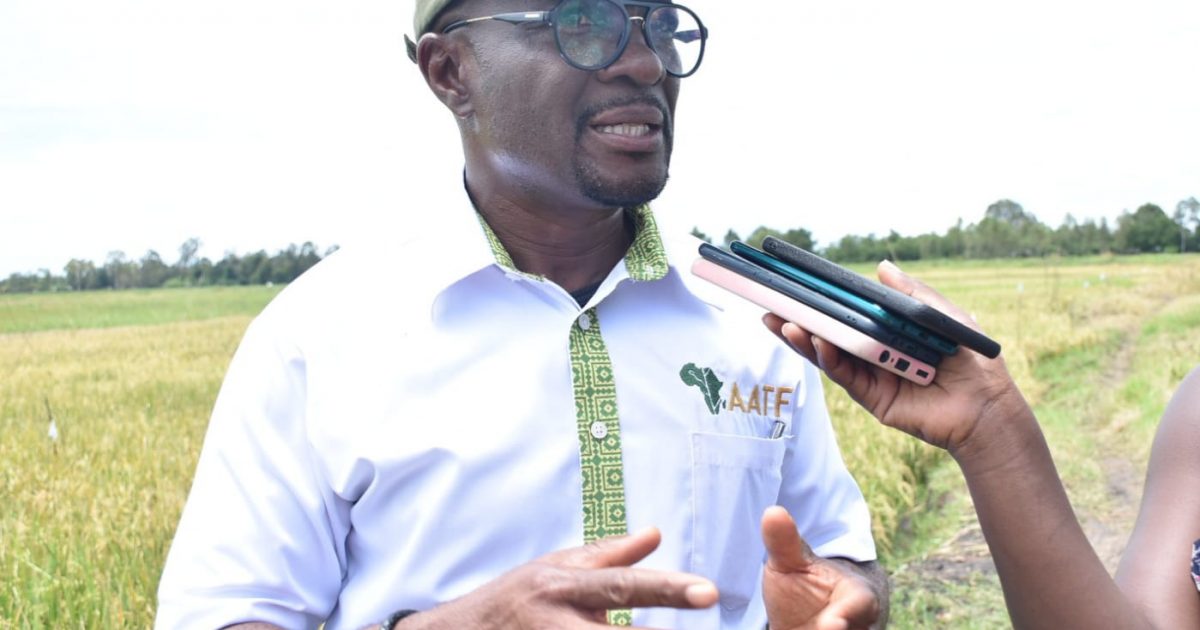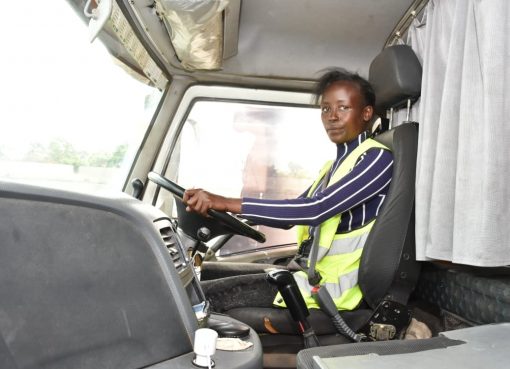In a bid to address Kenya’s significant rice production shortfall and enhance farmers’ income, the African Agricultural Technology Foundation (AATF) is pushing for the adoption of high yielding hybrid varieties to reduce the government’s annual rice import bill.
AATF, a non-profit African led organisation has partnered with farmers across the country to pilot several hybrid rice varieties to help the country bridge the shortage of the commodity which currently stands at 800, 000 metric tonnes.
Dr Kayode Sanni who heads AATF’s rice initiative said the situation has forced the country to rely heavily on imports from Pakistan, India, Thailand and Indonesia to meet the demand costing the taxpayer Sh 42 billion annually.
Kenya, he said has a huge potential for rice production adding that over ten new hybrid rice varieties have been authorised for planting which if well adopted will see the country join the league of top rice producers on the continent.
The varieties among them AH18007, AH18004, AH18003, Pwan Gold Plus, Komboka, Farm Gold Plus and Arise Gold Plus, he said were high yielding with good grain quality adding that the farmers brought on board during the pilot have registered yields of up to 10 tonnes per hectare.
This compared to inbred local varieties, he said signifies a 30 % increase in production per hectare (20-30 bags) promising farmers more income and stabilised production to enhance food security.
“This shows that using the same set of inputs farmers planting hybrid rice are able to produce more and earn more. This in the long run is going to reduce the cost of production and make locally produced rice competitive in terms of grain quality,” he said.
The hybrid varieties, he added, mature in 100-120 days and have demonstrated resilience to climate change shocks with research fields yielding up to 12 tonnes per hectare.
Dr Sanni said the National Rice Development Strategy 2019-2030, through which the government targets to scale up production per hectare to 7 tonnes by the year 2030 could be realised faster if hybrid rice is fully embraced.
“By using hybrid rice it is possible to achieve this target by the year 2025 if this technology we are championing is fully embraced and supported by the government,” he said.
The adoption of hybrid rice, he said, holds promise not only for addressing the production deficit but also for enhancing farmers’ resilience to climate change and other environmental challenges.
With higher yields and improved pest and disease resistance, hybrid rice varieties, he said, offer a sustainable solution to the pressing issues facing Kenya’s rice sector.
The seeds, he added, are produced in the country, a move that promises to create job opportunities in seed production companies and rice farms if the uptake of the new technology is scaled up.
“The parental line of these varieties is developed here in Kenya. Therefore seed companies interested in the venture will have access to it to produce their own hybrid seeds,” he said.
Even though the uptake is still low, Dr Sanni disclosed that AATF has partnered with the Alliance for Hybrid Rice in Africa (AHRA) which is a consortium of public and private sector players and the Cereal Growers Association (CGA) to rope in more farmers.
Through the partnership, the agency, he said, was advancing hybrid rice technologies, bringing together expertise and resources to create an enabling environment for the widespread adoption of hybrid rice cultivation practices in the country.
“The potential impact of this initiative extends far beyond economic gains. By reducing rice imports, Kenya can enhance its food sovereignty, mitigate the risks associated with fluctuating global rice prices, and create new job opportunities,” he said.
So far, he said over 1,500 farmers have embraced hybrid rice adding that through partnership with the Cereals Growers Association (CGA) which has a membership of over 600,000 farmers the agency plans to enlist 150,000 more farmers as the push to adopt the technology gains momentum.
CGA Project Manager Oswald Miriti attributed the low uptake for hybrid rice to farmer behaviour expressing optimism that more farmers will come on board by the end of this year.
“Farmers take time to adopt new technology. We have introduced these varieties in Mwea but farmers still insist on growing basmati pishori. However, now that they are seeing the output of these new varieties and the reduced cost of production we are seeing a steady increase in the uptake,” he said.
Grace Taka, a hybrid rice farmer at Khuluano in Bunyala North, Busia County confirmed that the varieties were high yielding promising farmers high returns as compared to local varieties.
“I planted 0.4 hectare during the pilot and managed to get 26 bags valued at Sh150, 000. This means if I had planted a big area I would have earned more. During this time we had a problem with water but this did not affect the production much,” she said.
Former Alego Usonga Member of Parliament (MP) Sammy Weya said hybrid rice was the way to go to empower farmers economically and local production to satisfy the demand.
However, the farmers, he added, must pool together and pursue the venture on a large scale to reap maximum benefits.
Cultivating the crop on a small scale, he said, was too costly given the high costs involved in land preparation.
With the government opening up 250, 000 acres for irrigation in Nzoia, Weya said this presents a good opportunity for farmers in western Kenya to explore commercial hybrid rice farming to feed into the national basket and for export.
By Chris Mahandara





